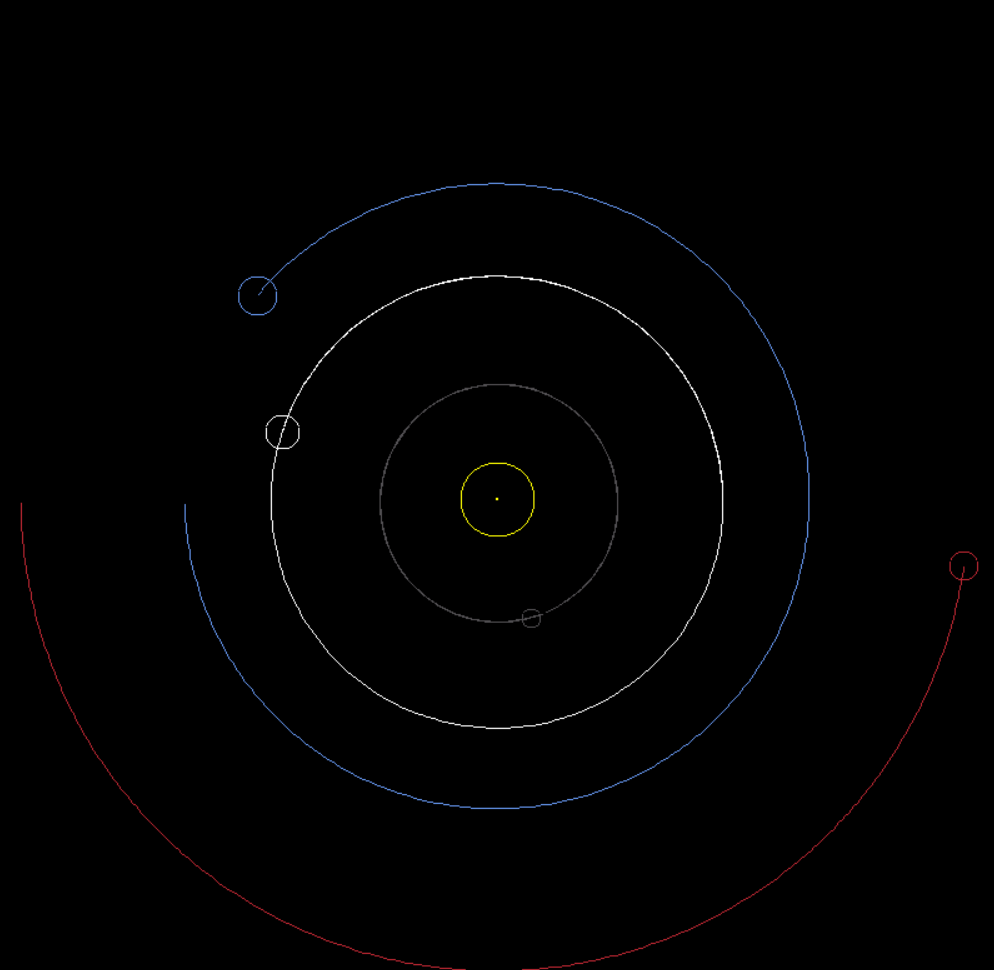This project is a planetary simulation written in Rust, creating a visualization of planets orbiting the Sun. It's designed to demonstrate the principles of celestial mechanics, using real-world physics to simulate gravitational forces and planetary motion.
The simulation features a dynamic model of planets orbiting a central star (the Sun), where each planet's motion is influenced by gravitational forces. The project is loosely based on a Python-based planetary simulation by Tech With Tim, adapted and expanded into Rust for enhanced performance and additional features.
- Realistic simulation of gravitational forces between planets and the Sun.
- Interactive visualization of planetary orbits.
- Scalable model accommodating additional celestial bodies.
- Adjustable simulation parameters for customized experiences.
- Informative display of planetary data.
Ensure you have Rust installed on your system. If not, follow the instructions on the Rustup website to install it.
-
Clone the repository:
git clone https://github.com/gmifflen/Rust-Planet-Simulation.git
-
Navigate to the project directory:
cd rust-planet-simulation -
Compile and run the project:
cargo run or cargo run --release
After starting the simulation, you will see planets orbiting the Sun. Each planet's motion is calculated in real-time based on gravitational forces.
I'm not the best at Rust, this is my second Rust project, my first being Bounce.
Any suggestions on improvements or ways to write it in a better/safer way is much appreciated.
- Special thanks to Tech With Tim for the original Python Planet Simulation, which inspired this project.
- This project is developed using Rust and the minifb library for windowing and buffer management.
This project is open-source and available under the MIT License - see the LICENSE file for details.
